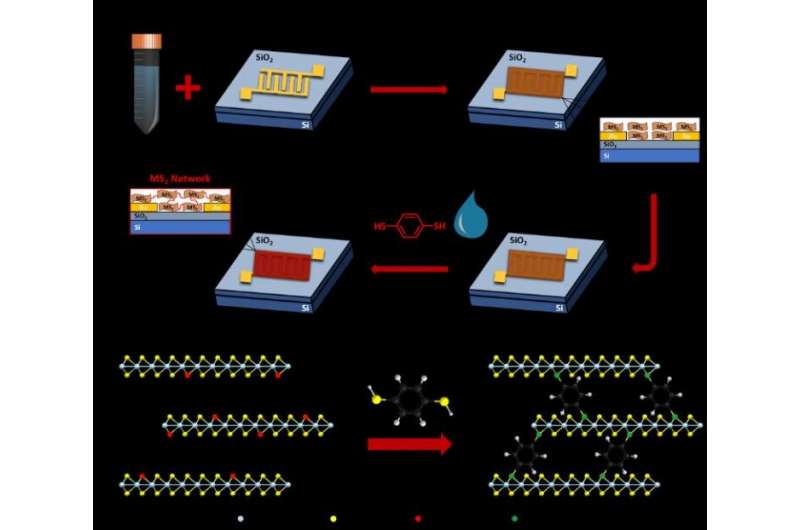The exfoliation of graphite into graphene layers
inspired the investigation of thousands of layered materials:
amongst them transition metal dichalcogenides (TMDs). These
semiconductors can be used to make conductive inks to manufacture
printed electronic and optoelectronic devices. However, defects in
their structure may hinder their performance. Now, Graphene
Flagship researchers have overcome these hurdles by introducing
‘molecular bridges,’ small molecules that interconnect the TMD
flakes, thereby boosting the conductivity and overall
performance.



